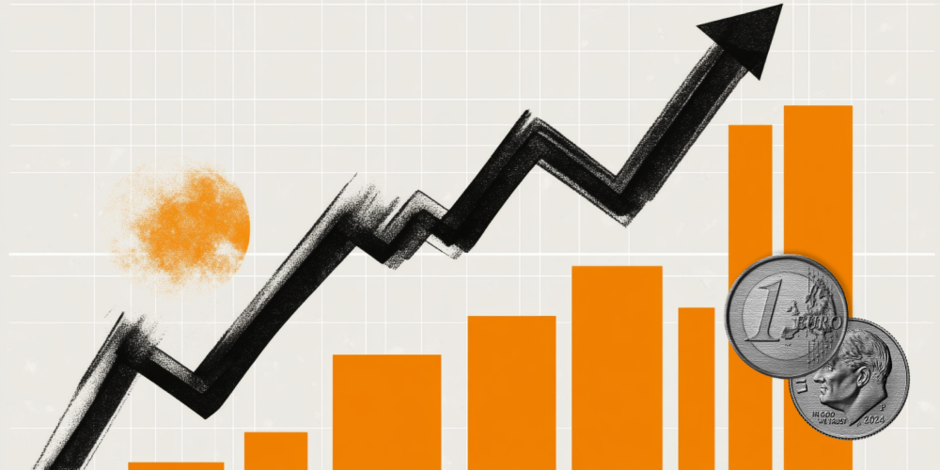Forex alert: Market complacency – It's just a negotiation theatre?

Forex markets
The dollar gained early traction in Asia as Trump cranked up the tariff rhetoric, signalling he’s ready to slap 25% duties on autos, semiconductors, and pharmaceuticals—with an announcement potentially coming as soon as April 2. Adding to the suspense, he hinted at giving companies a grace period to shift manufacturing back to U.S. soil before the new import taxes hit.
So far, FX and cross-asset markets—gold being the glaring exception—have largely shrugged off the noise, treating Trump’s tariff threats as just another round of high-stakes brinkmanship. But there’s a creeping sense that traders might be playing with fire, daring to test just how far he’s willing to push.
Still, we remain locked in a “Boy Who Cried Wolf” FX setup—markets are holding their breath, reluctant to commit to aggressive fresh long dollar positions until the next definitive move lands on the tariff chessboard. When that moment comes, expect the complacency to shatter in an instant.
It’s definitely starting to feel like the market is calling Trump’s bluff—daring him to swing the hammer. Maybe they’re right. Maybe this is all just negotiation theatre, another round of posturing before a watered-down compromise.
But if those tariffs land harder than expected, today’s cool-headed complacency could turn into full-blown panic overnight. Markets love to pretend they’re always one step ahead—until they aren’t.
Don't lose sight of the real wild card—Trump’s tariff sledgehammer. Markets are still trying to determine whether he’s about to strike with full force or just give the table a warning tap. Until that becomes clear, traders are walking a fine line, balancing geopolitical optimism with the looming threat of a full-blown trade war. One misstep could result in a spike in volatility.
One noticeable observation this week is that EUR/USD is struggling to find upward momentum despite the US -Russia peace talks; it's becoming increasingly evident that euro weakness is taking hold. This is primarily driven by Trump’s escalating isolationist stance toward EU allies, suggesting we could test below 1.0400 this week if this view holds.
A lot of the peace talk narrative is already baked into sentiment—betting markets peg the odds at 70% for 2025, and let’s be honest, Wall Street traders basically live on Polymarket. But let’s cut through the noise—peace processes don’t happen with the flick of a pen. They follow a well-worn script: ceasefire first, a tense détente to test the waters, and then the real fight begins—slicing up the geopolitical pie at the negotiating table.
But if you think Eastern European geopolitical risk is vanishing anytime soon, you’re playing with fire. Oil traders aren’t that naïve. Oil and TTF gas remain the ultimate truth serum—if peace talks gain traction, they’ll tell us before the headlines do. Until then, the market’s pricing optimism, but the reality check is still pending.
Bund markets
Bund yields are on the rise again as markets begin pricing in higher government debt issuance to fund Europe’s newfound urgency in defense spending. Meanwhile, a tightening in eurozone sovereign spreads suggests traders are laser-focused on the prospect of joint EU borrowing—a shift that has already pushed 10-year Italian spreads over Bunds to their tightest levels since 2021.
While EU leaders weigh the mechanics of joint borrowing, the European Commission is exploring an alternative playbook: activating national escape clauses to sidestep fiscal constraints and allow sovereign borrowing beyond the EU’s strict budgetary limits. In other words, Europe is looking for ways to rearm without setting off fiscal alarm bells.
For now, markets seem more interested in the bloc’s push toward fiscal unity, which has conveniently overshadowed concerns about rising Italian debt issuance. Traders are taking the view that Europe is moving closer together, and that’s keeping spreads in check.
The front end of the EUR curve remains surprisingly anchored, but I think the markets are underestimating just how much the ECB will need to cut. While traders have largely settled on a 2% terminal rate, Europe’s economic headwinds and ongoing fiscal expansion for defence spending could force policymakers to go deeper on rate cuts.
The ECB is fighting sluggish growth and navigating the quantitative tightening (QT) effect. As balance sheet reduction collides with slowing inflation, the central bank may need to loosen policy more aggressively than markets anticipate.
Translation? The front-end calm might not last much longer. If economic data continues to crack, rate-cut expectations could start repricing swiftly, dragging yields lower and reigniting the euro’s downside risk.
Author

Stephen Innes
SPI Asset Management
With more than 25 years of experience, Stephen has a deep-seated knowledge of G10 and Asian currency markets as well as precious metal and oil markets.
















